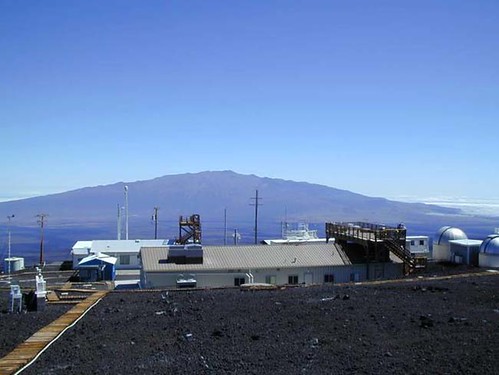Monthly Mean CO2 for the Past 50 Years. Credit: NOAA
This simple graph of the Mauna Loa Carbon Dioxide Record documents a 0.53 percent or two parts per million per year increase in atmospheric carbon dioxide since 1958. This gas alone is responsible for 63 percent of the warming attributable to all greenhouse gases according to NOAA’s Earth System Research Lab.
Fifty years ago the U.S. Weather Bureau, predecessor of NOAA’s National Weather Service, helped sponsor a young scientist from the Scripps Institution of Oceanography to begin tracking carbon dioxide in Earth’s atmosphere at two of the planet’s most remote and pristine sites: the South Pole and the summit of the Mauna Loa volcano in Hawaii. This week NOAA, Scripps, the World Meteorological Organization, and other organizations will celebrate the half-century anniversary of the global record of carbon dioxide in Earth’s atmosphere—often referred to as the “Keeling Curve” in honor of that young scientist, Charles David Keeling.
– NOAA Celebrates 50-Year Carbon Dioxide Record
NOAA’s Mauna Loa, Hawaii CO2 Monitoring Station. Credit: NOAA
Carbon dioxide is the most important of the greenhouse gases produced by humans and very likely responsible for the observed rise in global average temperatures since the mid-20th century. The Mauna Loa and South Pole data were the first to show the rate of CO2 buildup in the atmosphere. In 1974, NOAA began tracking greenhouse gases worldwide and continued global observations as the planet warmed rapidly over the past few decades.
Links
Mauna Loa Carbon Dioxide Record
Mauna Loa Observatories
Earth System Research Lab
